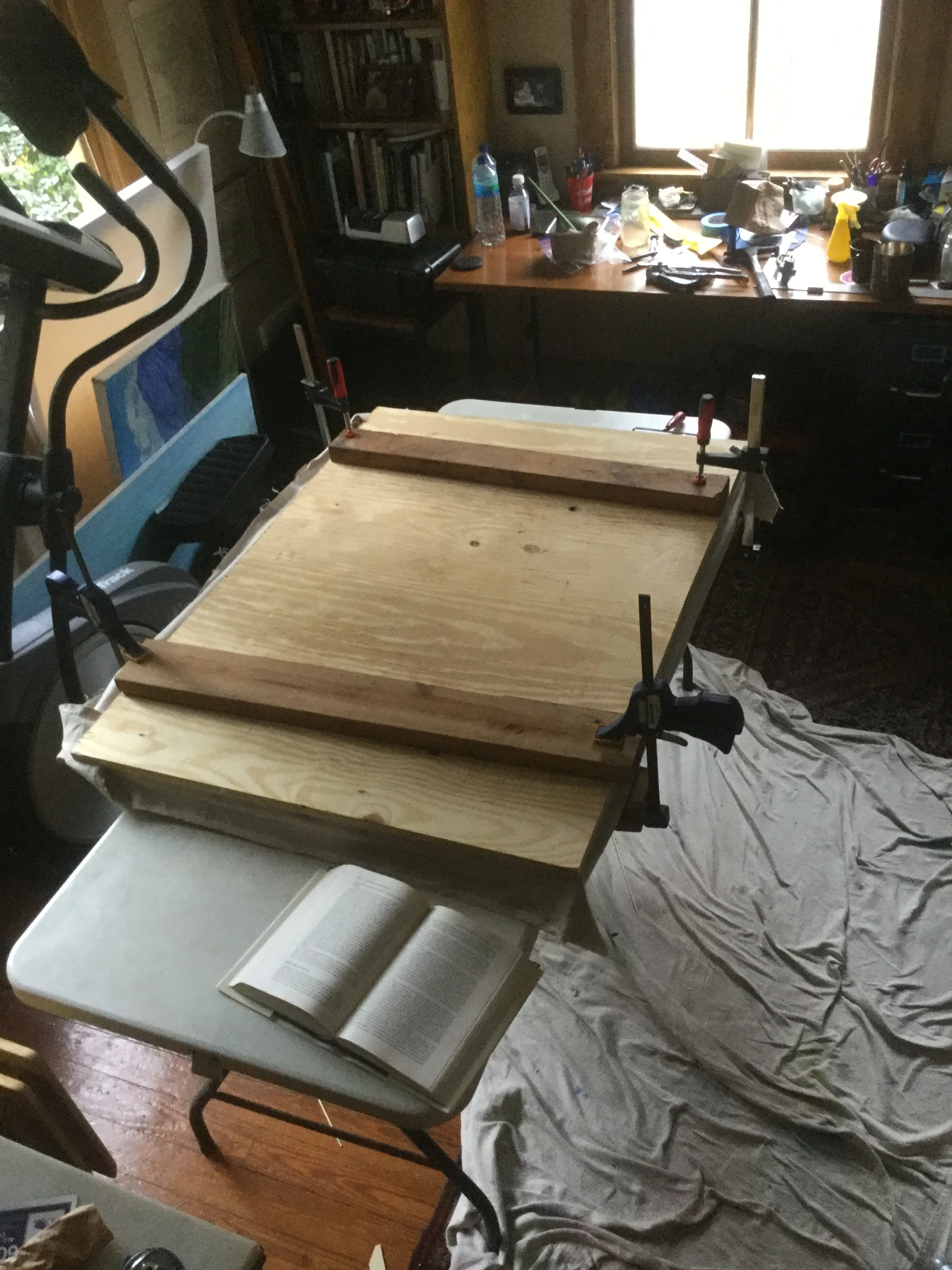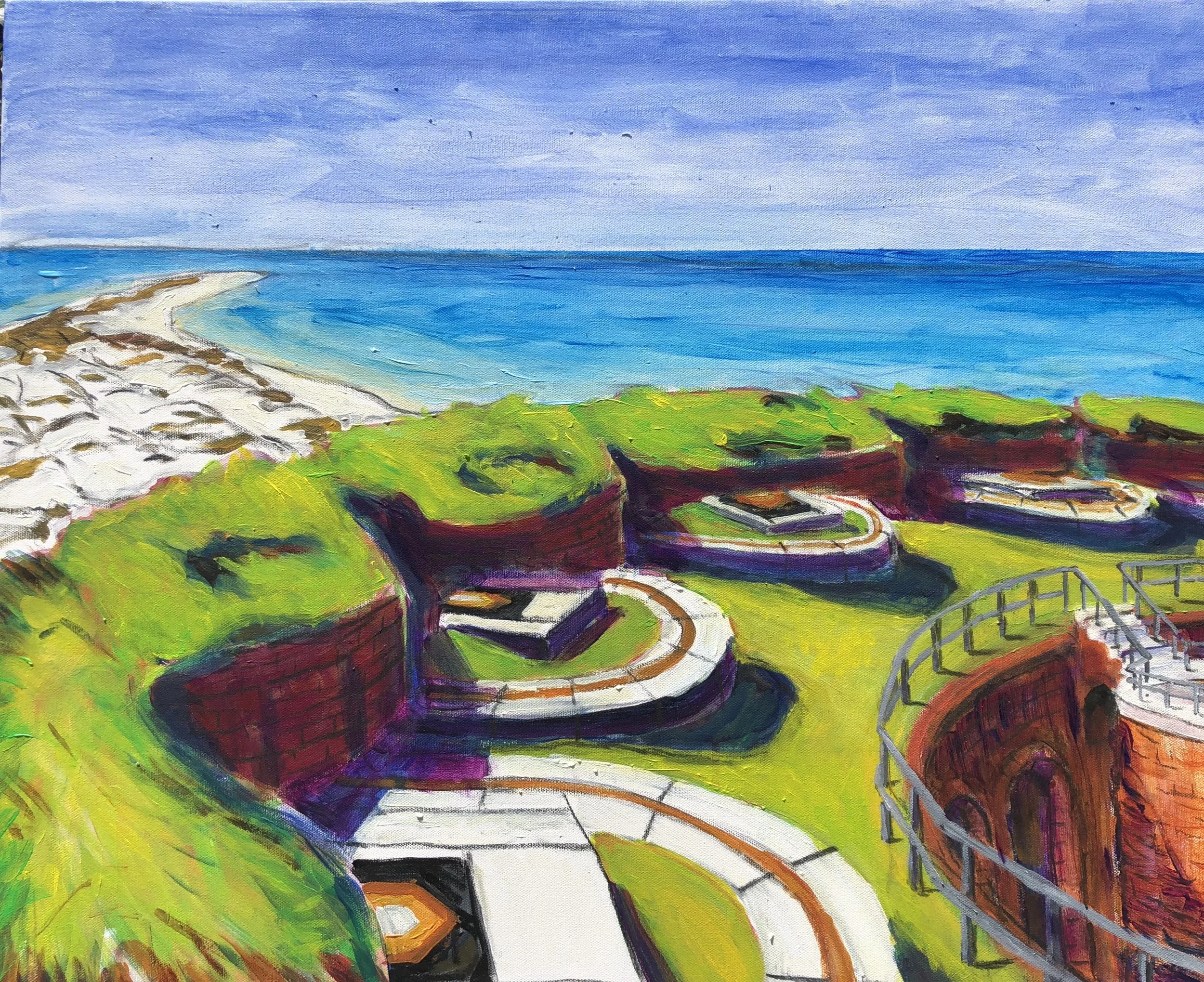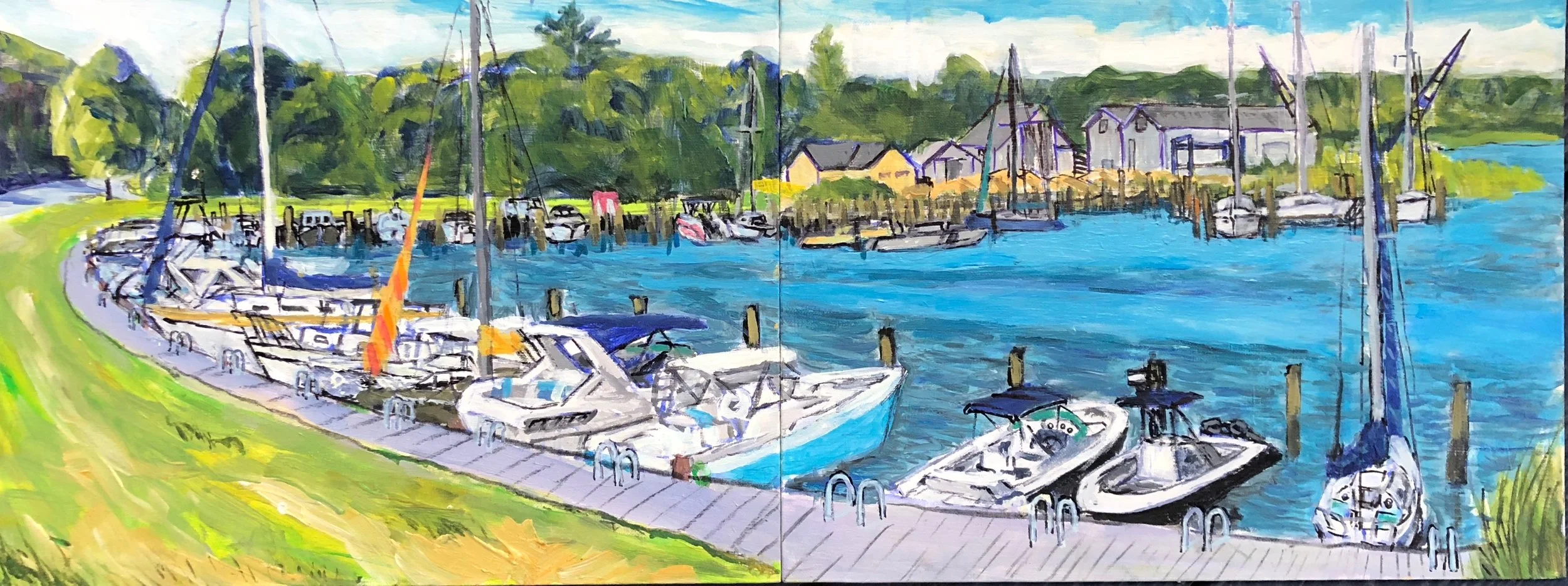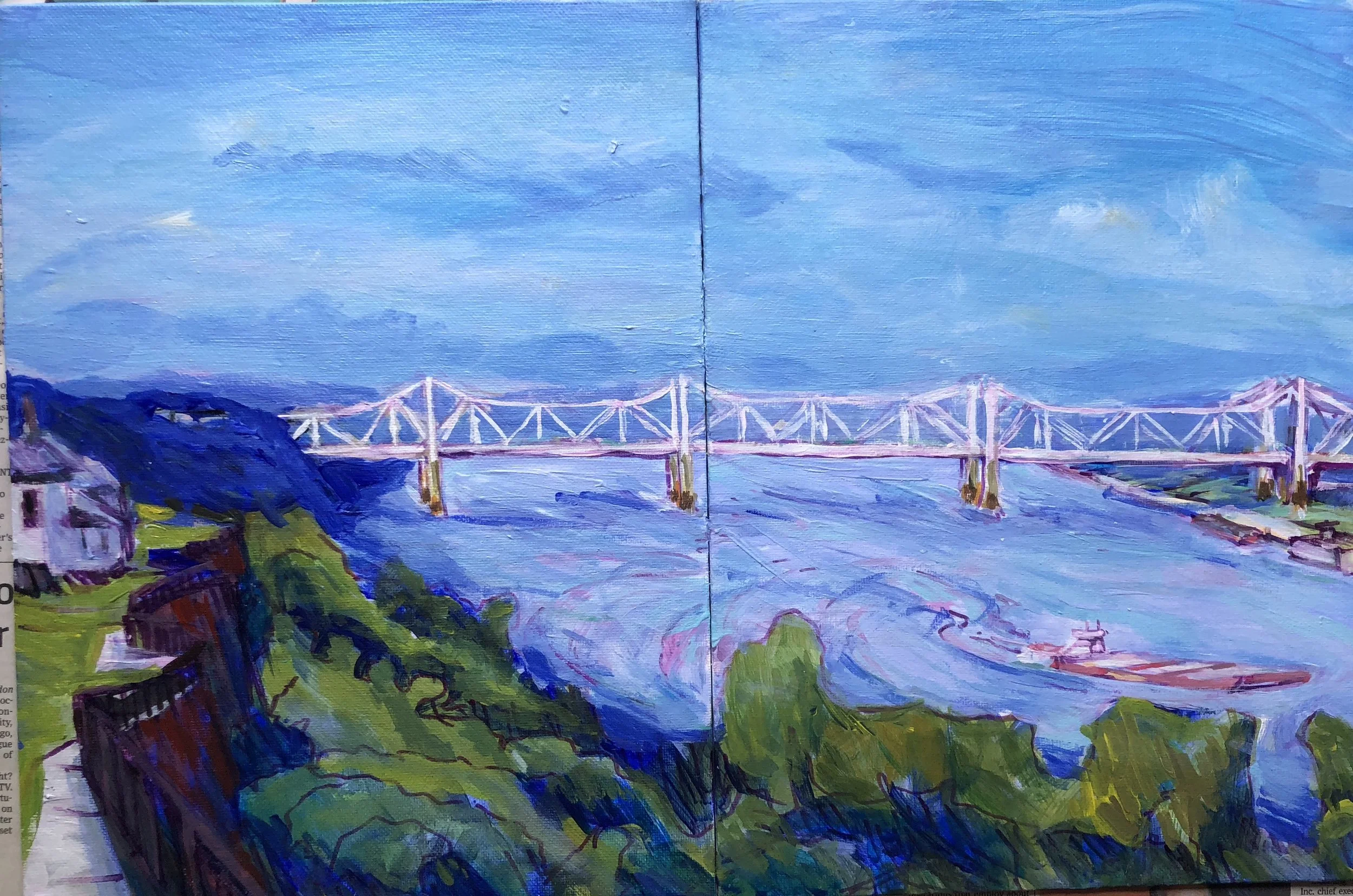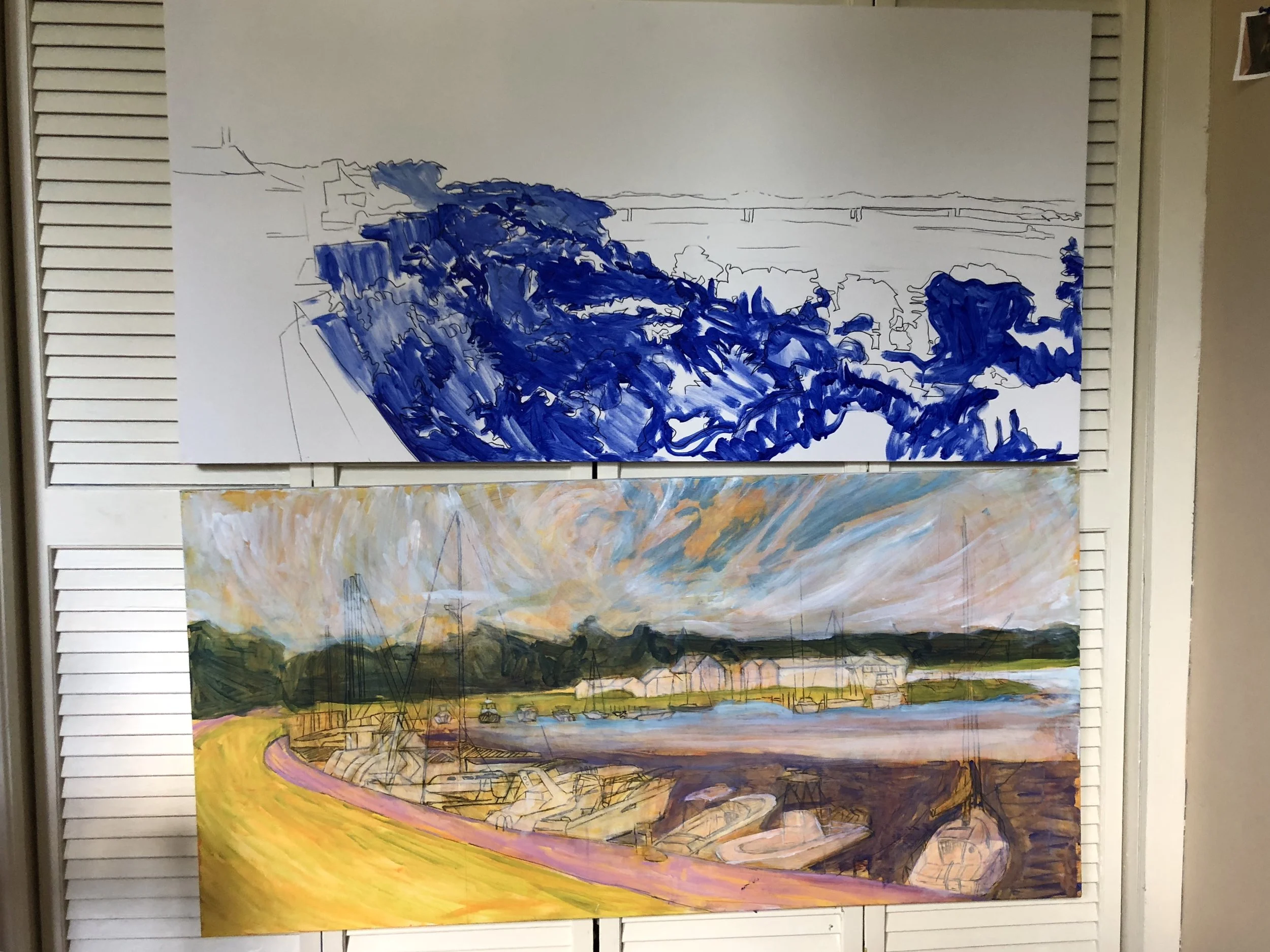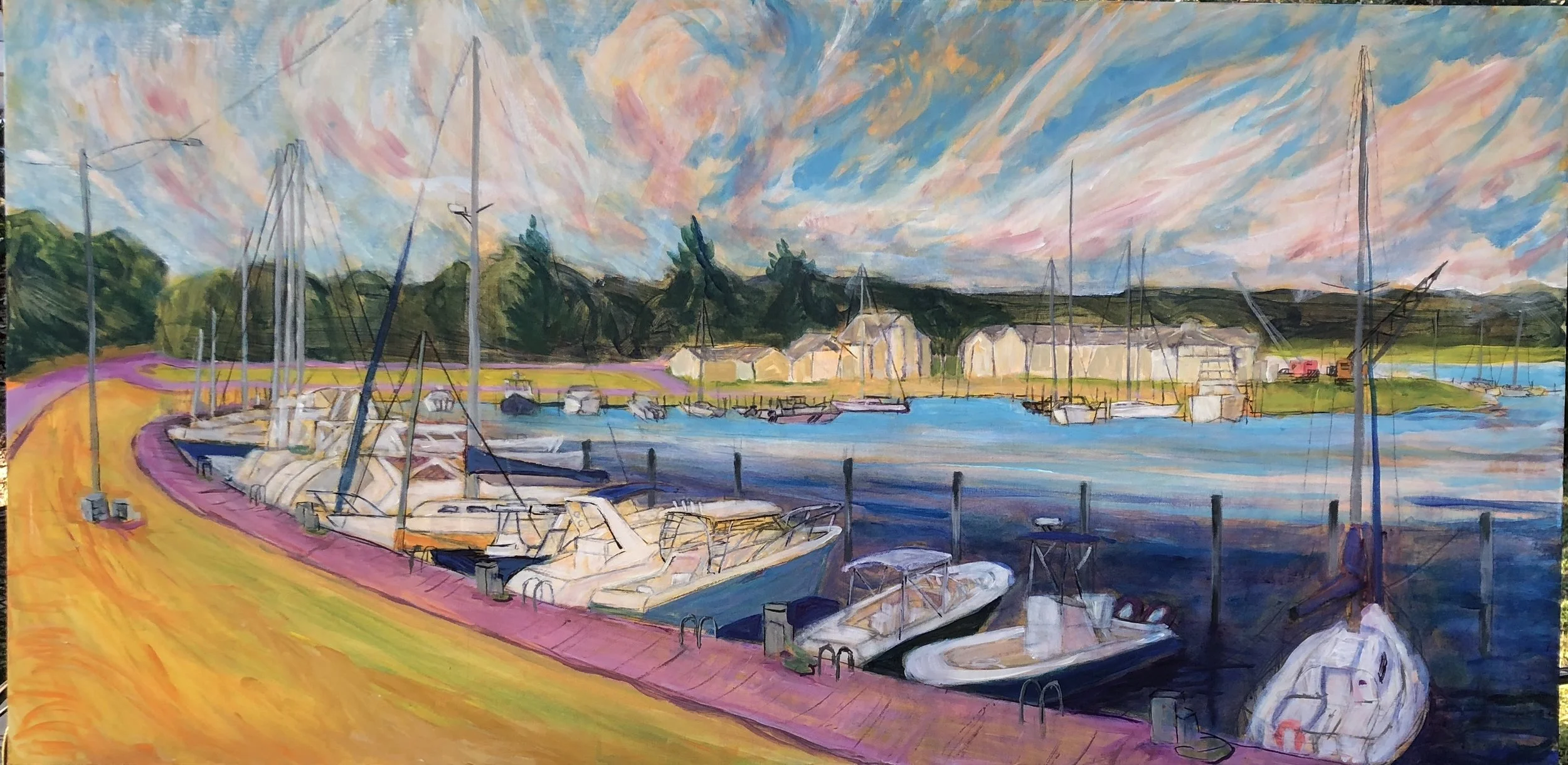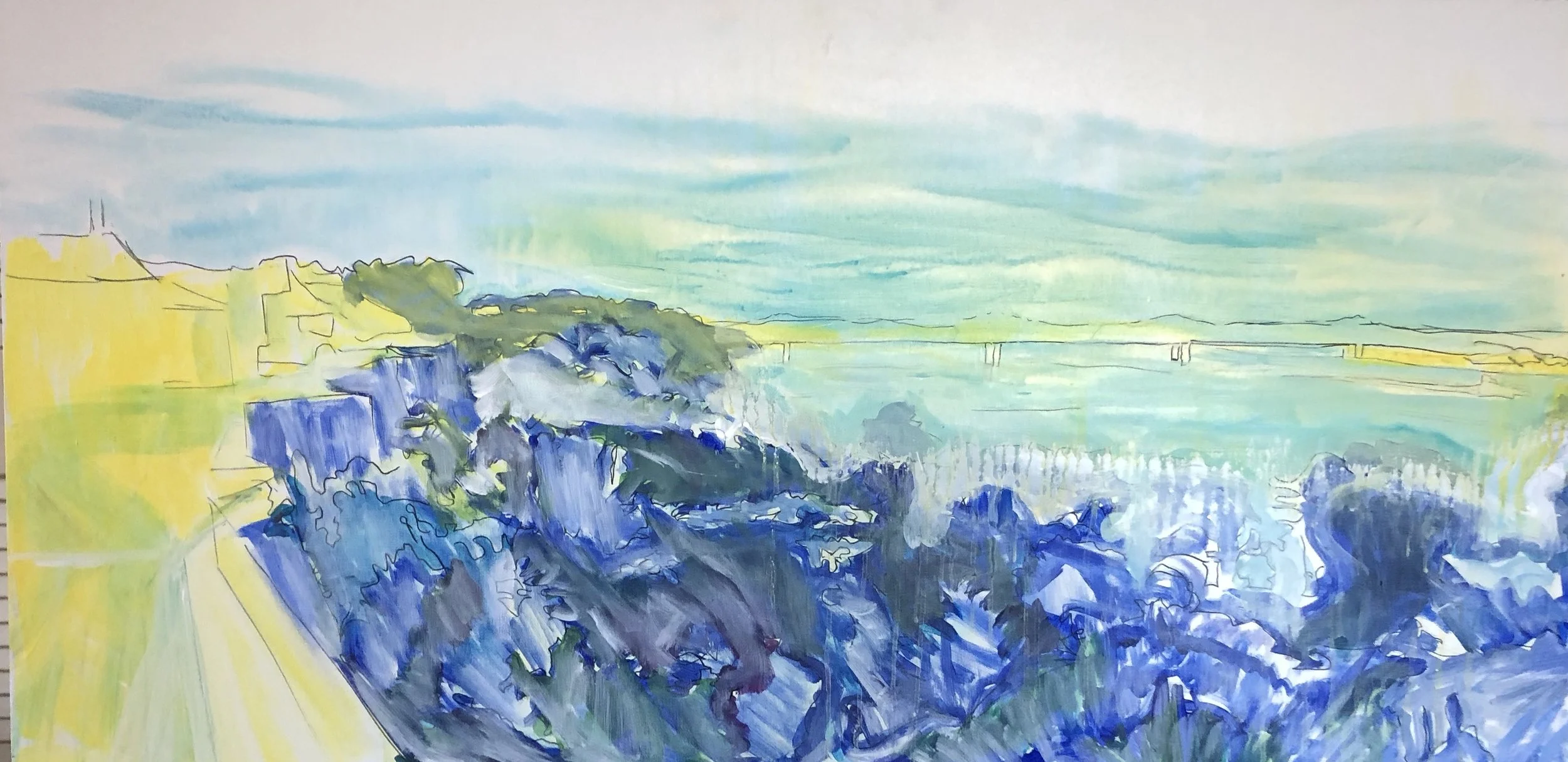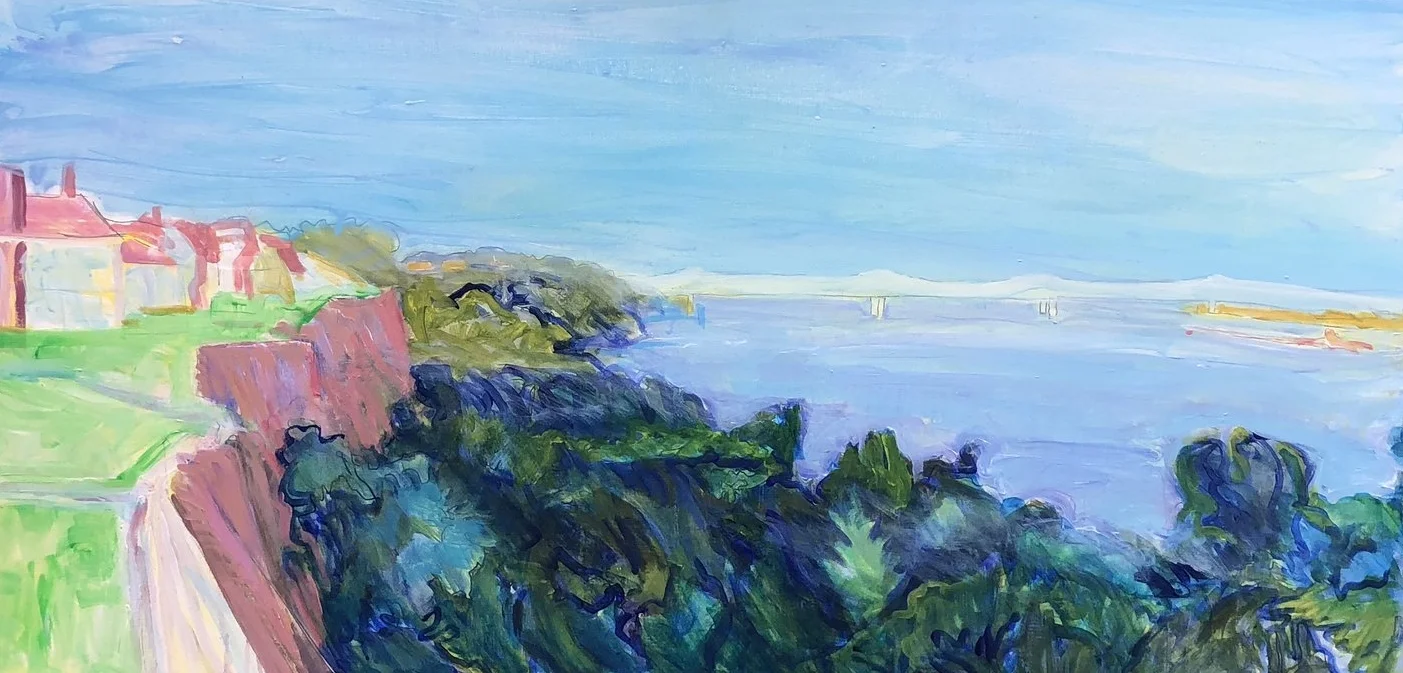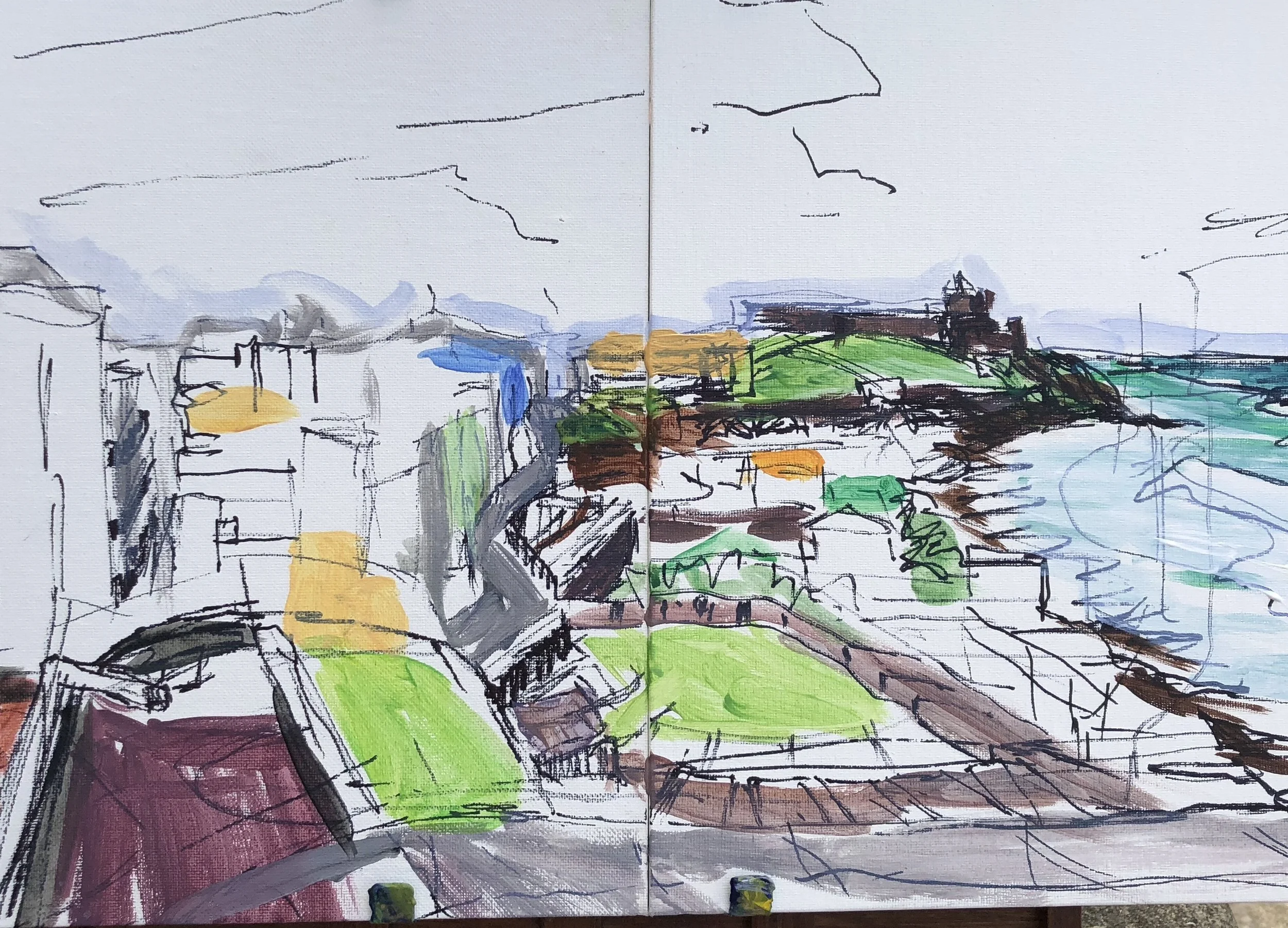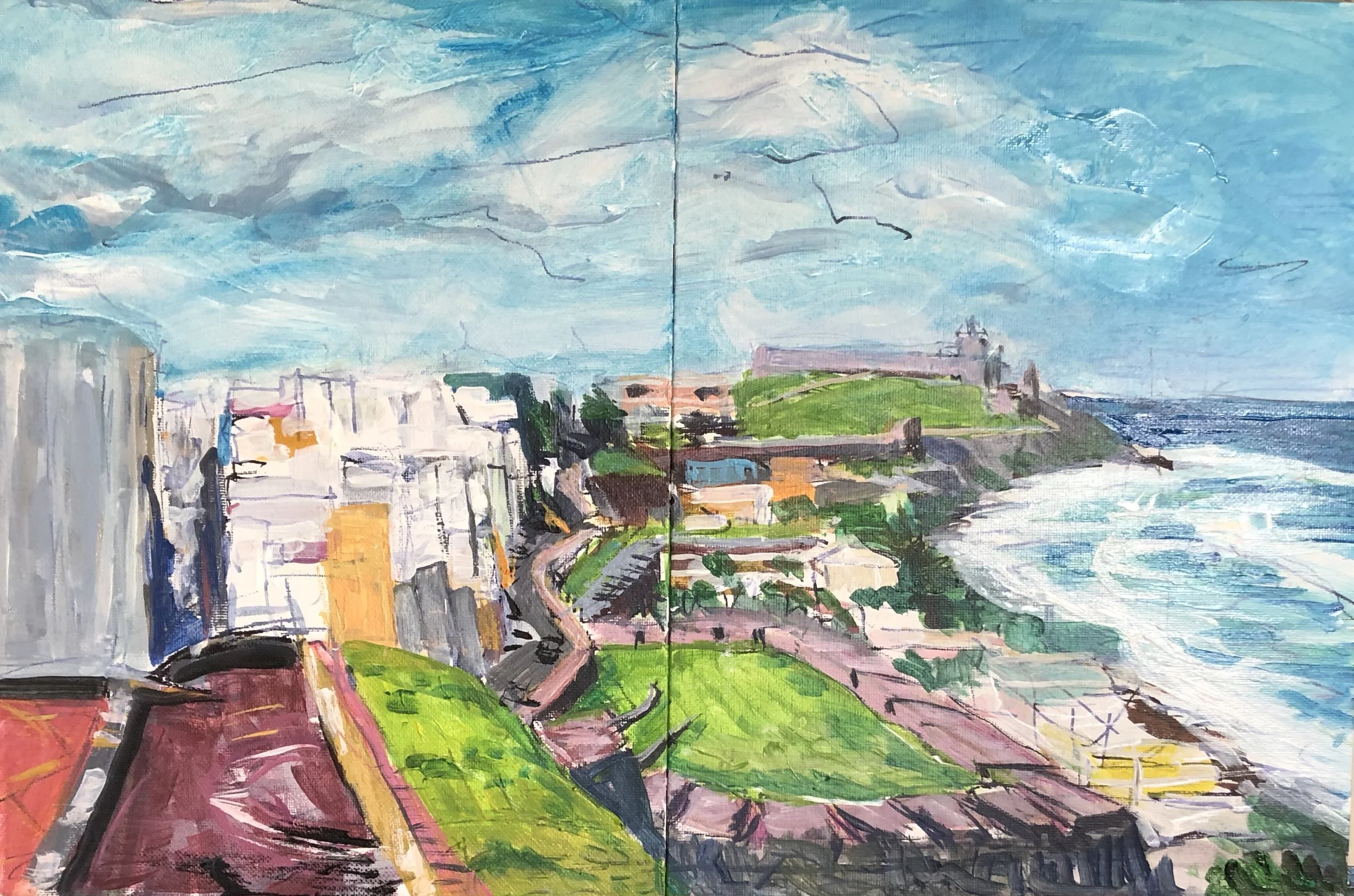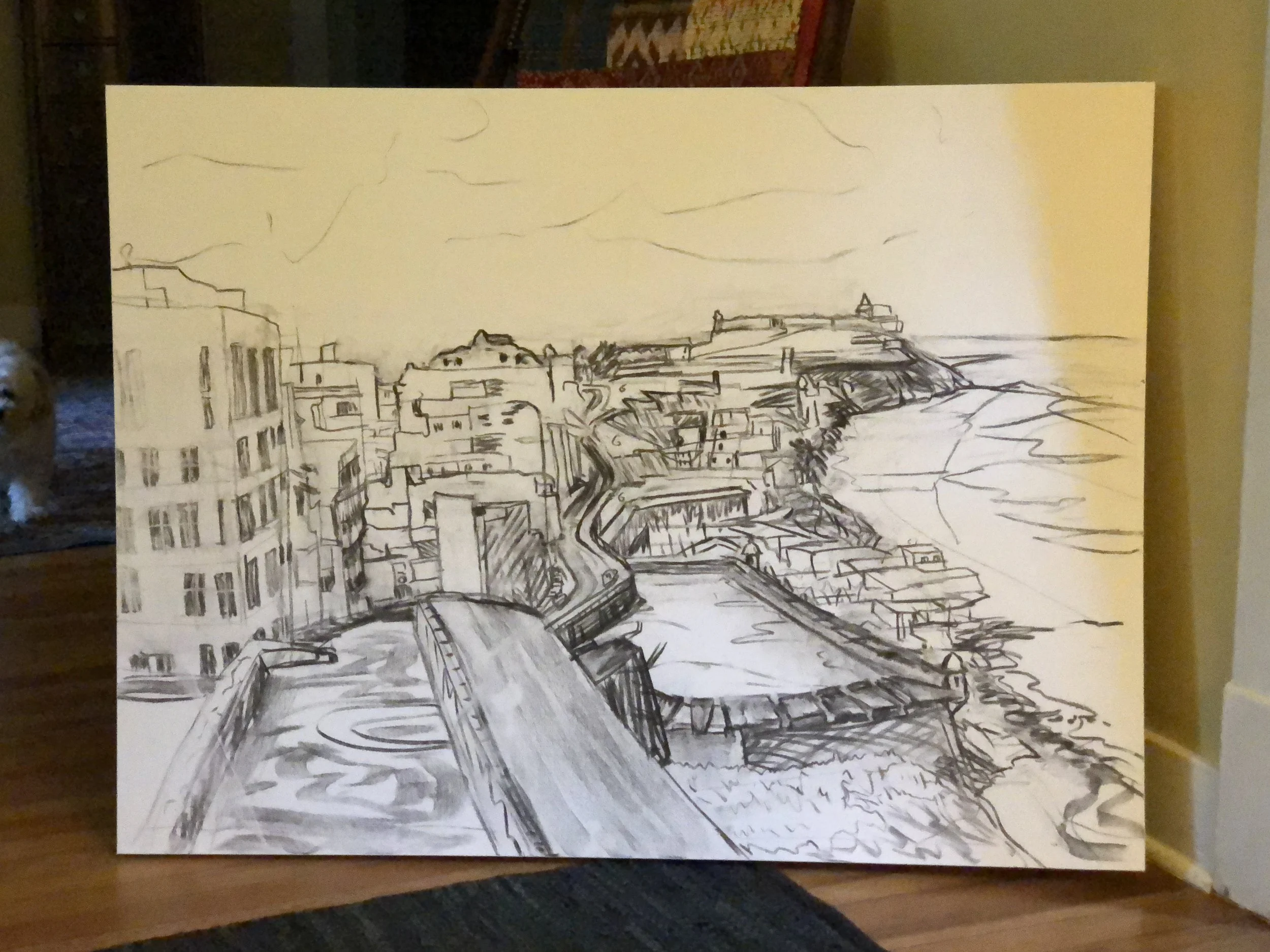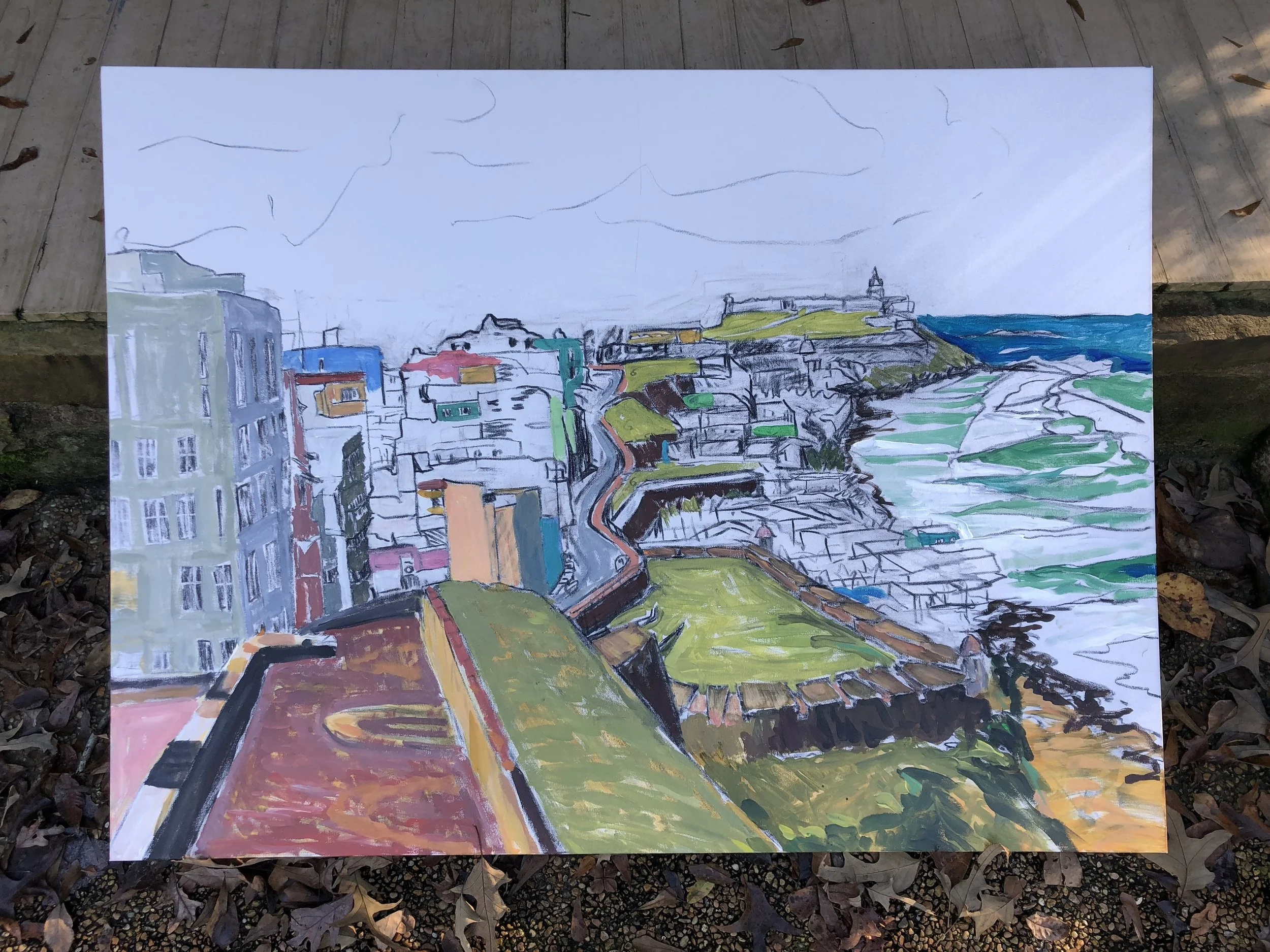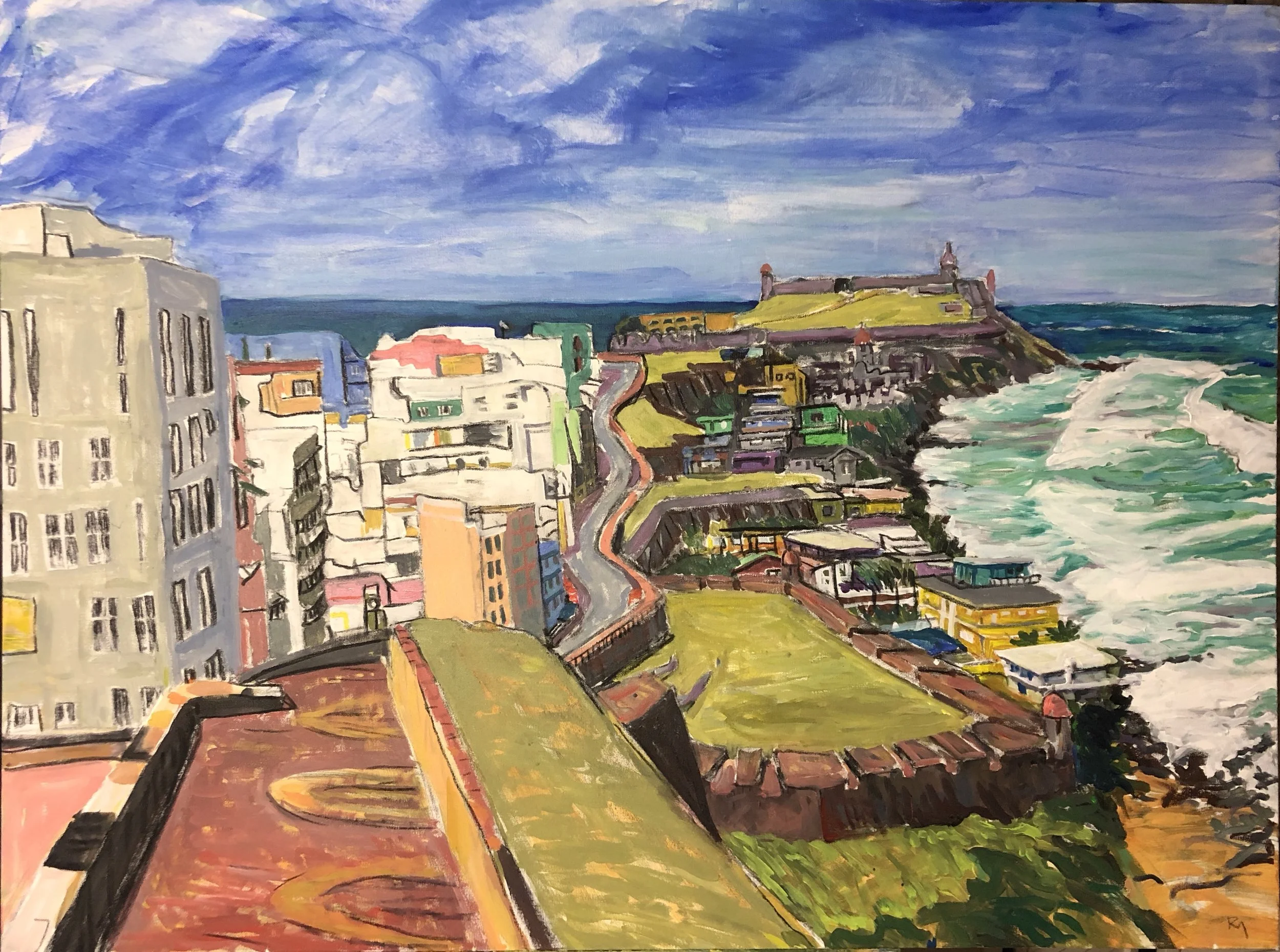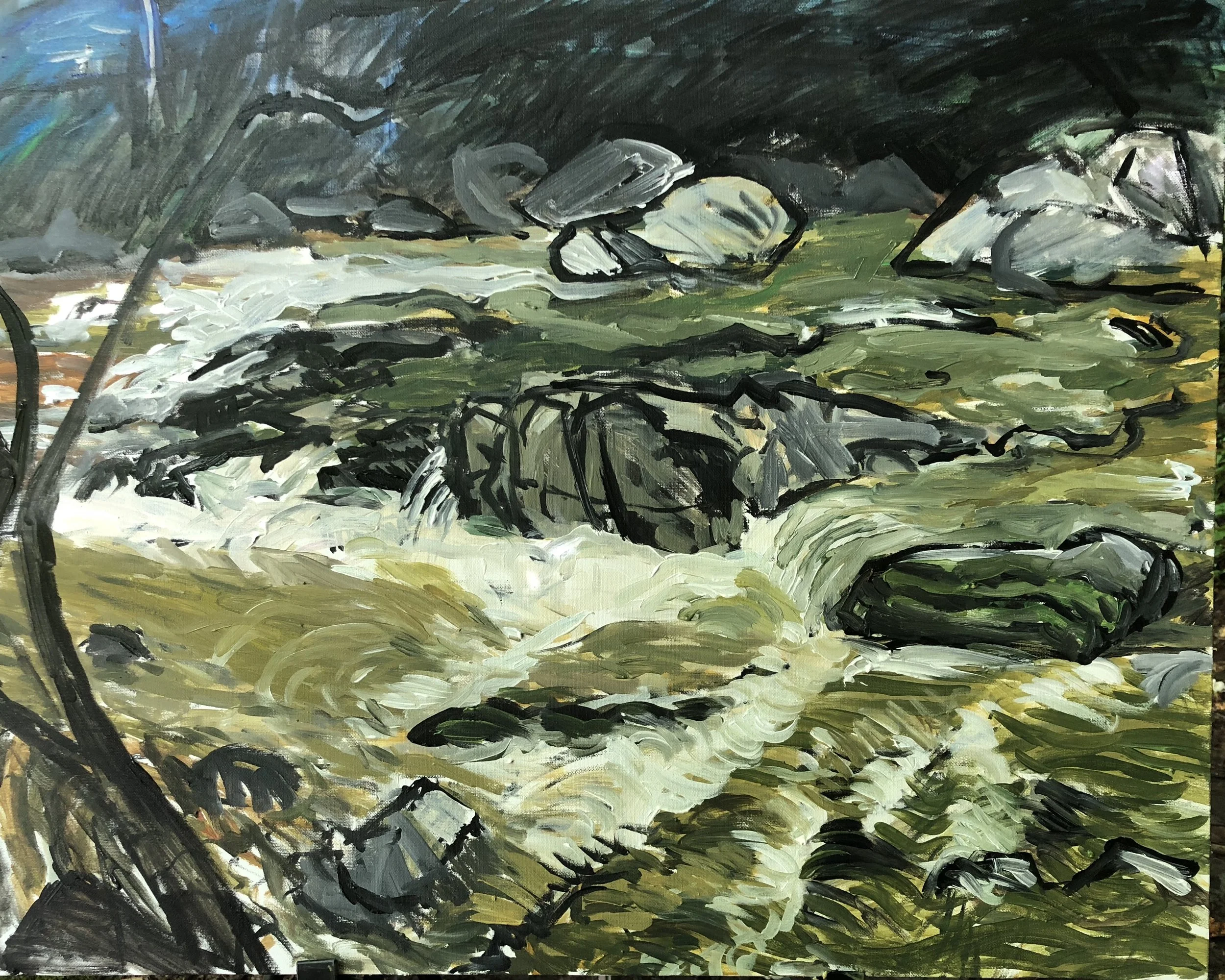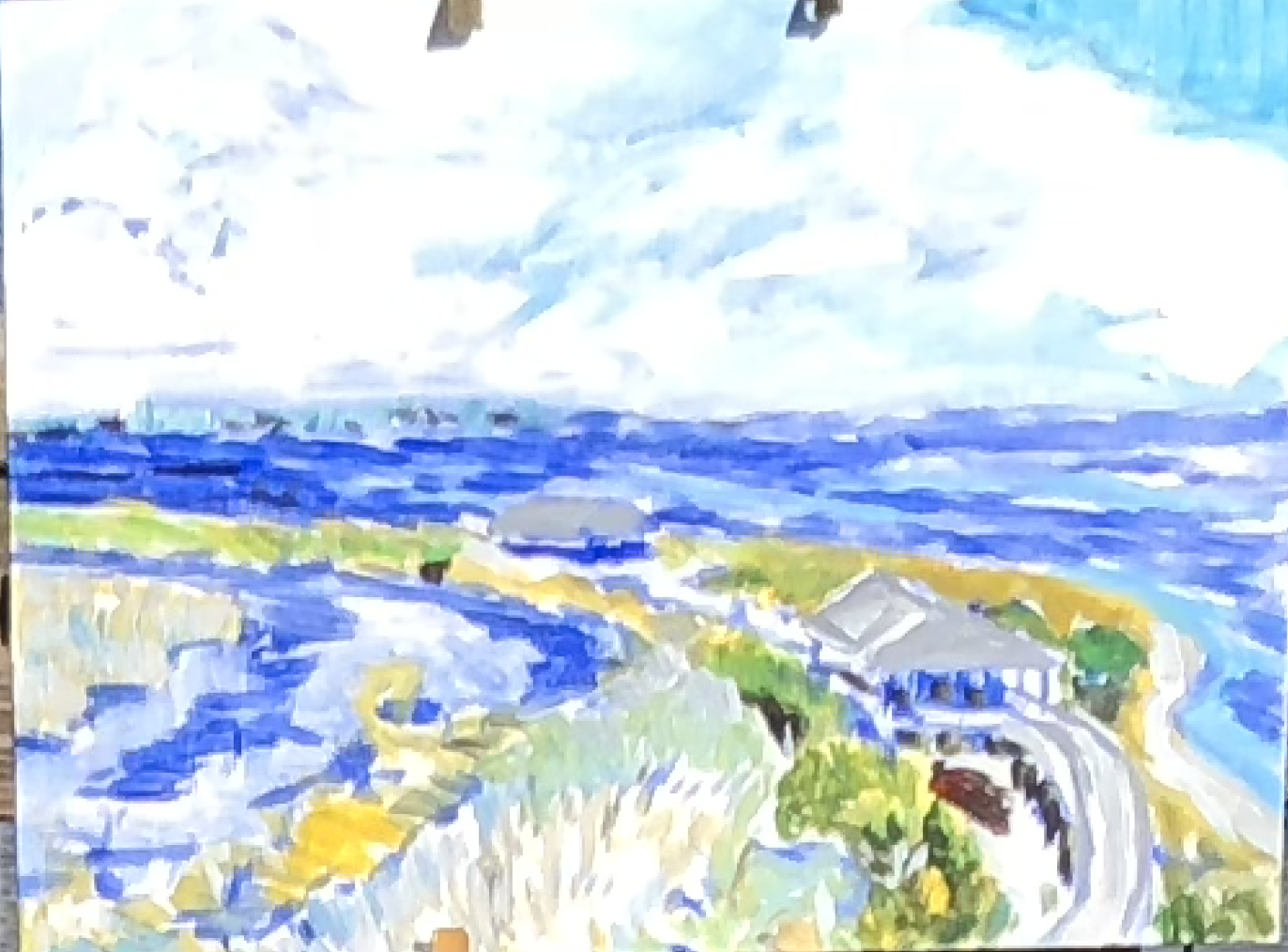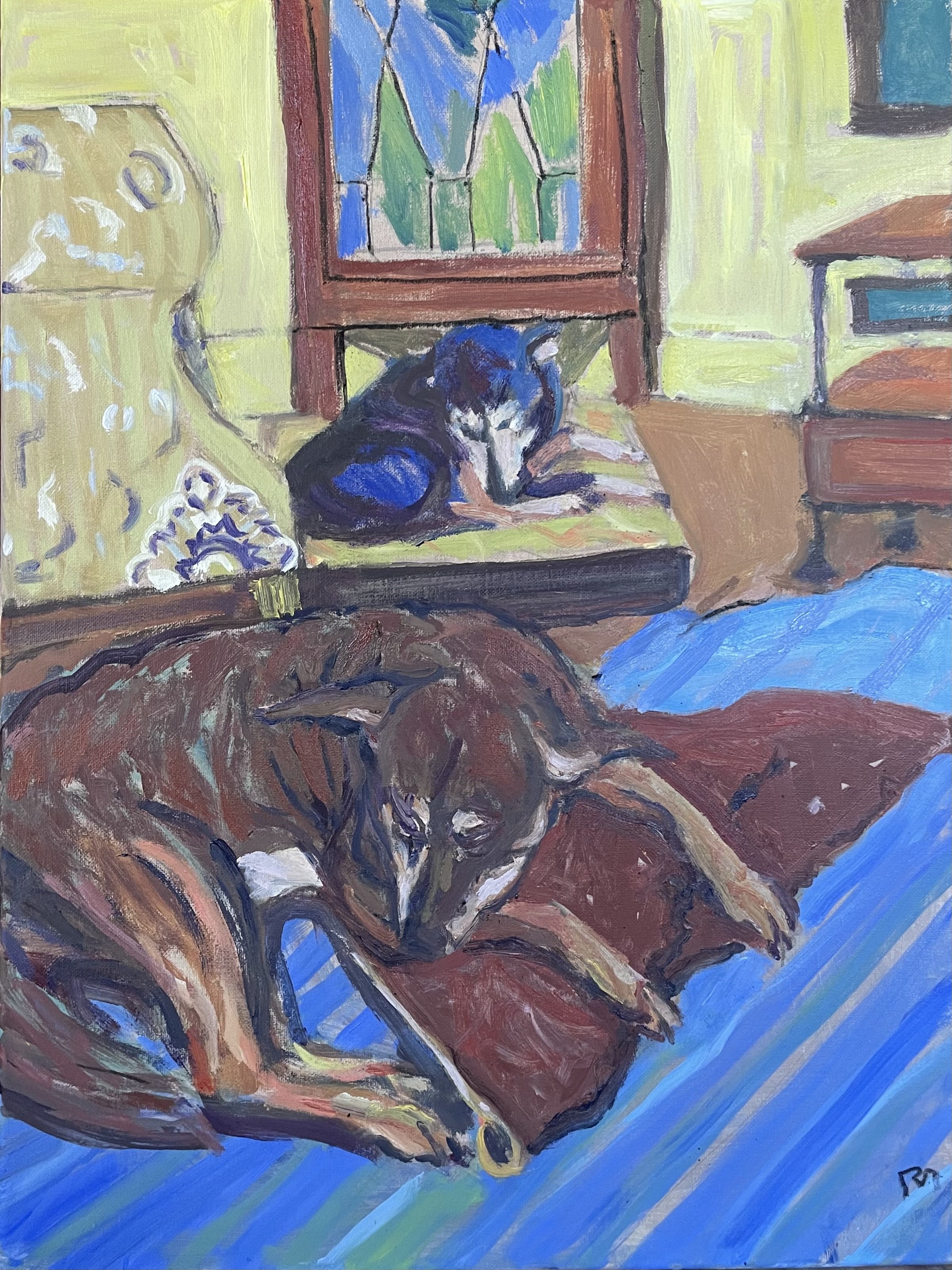About 30 years ago I went on CAVU a old style charter boat for a weekend to Chandeleur Island with friends. I was the odd man out in that I didn’t come loaded down with fishing gear. I came to sketch. As was always true with other activities, this left me last when it came to team up and go out on the skiffs. On the first morning Bob Hatch saw this happen and said come on let’s go. He fished and I sketched. It was a beautiful day. Although by reputation he was irascible, we had a really nice time that morning.
He was a jumbo sized guy - how he fit in a fighter cockpit I’ll never know. I started a sketch of him on one pair of pages from the waist up and then did another sketch of him from the waist down on another pair of pages. Ever since I have thought about trying to paint him from those two pairs of sketches.
Last week Bob died after a long life, outliving his wife by a few months and leaving behind four daughters with whom we’ve been connected in different ways for a very, very long time.
Yesterday afternoon, I ran down and assembled those sketches to make a painting for the youngest daughter Sharon, who was particularly close to me through my sister Millie and through her own career as an attorney on the coast. .
I sketched it out in oil on a 24” by 24” canvas and approached it as though I were using prismacolor pencils, just as I had done in the original sketches. I got about this far by the end of the day yesterday.
This morning I worked on finishing up the piece and realized I had to do some studies to get a real likeness. I found a few photos from family events we had attended together and used a full face view to work on how to reshape and resize things. I did a lot of the painting with just one small bright brush and then switched over to some line brushes and one larger bright to finish the sky. I enjoyed working on this study and got to completion in part because I had a solid color study to work from.
Here is how it ended up.








